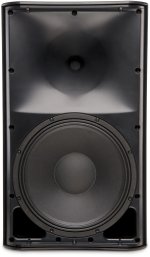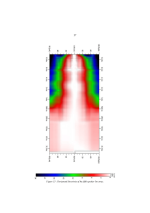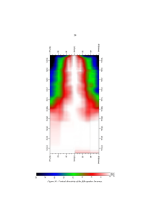Maybe I'll get stain the horns this weekend
So did it happen? Should be dry by now 🙂.
Hell no but! Just over the holiday weekend, I Finally created a stain color that I like😃 . Theres nothing like having something you like but not getting the aesthetic right.
I have minwax oil stain, minwax tung oil and turpentine. Minwax poly and Deft spray lacquer. Theres a talented wood guy I found online and conversed with
(Heres his DIY project)


Who gave me some good info on staining. The gist of it is to thin/dilute the stain and apply many, thin coats, until color is achieved. First maybe Stain and then on to Tung oil which builds up into a luster after enough coats, so I hear. After that I may wipe on poly and finish with the spray lacquer.
I think in order to help dummy proof the stain process I will go for a higher dilution. This should help me cover surface, faster, without flaw, as I foresee the need to do both horns inside and out, for each layer I do.
I'd like to get a nice animal hair paint brush. Between that and wiping hopefully I'm on the right path
I have minwax oil stain, minwax tung oil and turpentine. Minwax poly and Deft spray lacquer. Theres a talented wood guy I found online and conversed with
(Heres his DIY project)
Who gave me some good info on staining. The gist of it is to thin/dilute the stain and apply many, thin coats, until color is achieved. First maybe Stain and then on to Tung oil which builds up into a luster after enough coats, so I hear. After that I may wipe on poly and finish with the spray lacquer.
I think in order to help dummy proof the stain process I will go for a higher dilution. This should help me cover surface, faster, without flaw, as I foresee the need to do both horns inside and out, for each layer I do.
I'd like to get a nice animal hair paint brush. Between that and wiping hopefully I'm on the right path
I can relate to how hard it can be to achieve the color you're happy with. I had stained my arrays which were bare plywood end grain and actually did many test sample pieces before applying the final stain on my speakers. I had 6 coats of polyurethane on top and hand-polished them with automotive polish. Quite a bit of work 😀.
camplo, spraying stain is a good way to even your colors over blotchy wood (if you have the equipment) use a oil base stain mixed down with thinner, experimentation is involved to get the mixture blend and air pressure set, small nozzle (believe I use 1.3 mm for that) then practice a little because spraying stain is like artwork alway keep the air jet going and move fast, while its still damp come back over and blend the lighter spots with quick blips of spray while still sweeping the can over the entire length with the air jet always going.
I reckon if you’ve never used an air sprayer that might be greek but its not that difficult if you practice a little.
I reckon if you’ve never used an air sprayer that might be greek but its not that difficult if you practice a little.
I looked into it and a decent spray gun is relatively cheap.spraying stain is a good way to even your colors
I wanted to start with very diluted stain already. Sounds a thin medium is also welcome by a sprayer. Thanks again guys for taking the time to share your thoughts!
I will have to wipe the inner most of the throat , with a cloth on a stick or something rather.
It gets some decent reviews but i’d be a bit leery of that price tag, the cheaper sprayers usually don’t have very good adjustability. I reckon it’d be a cheap way to try it to see if you might like to get a better one.
I’ve got one. Like most air guns the biggest issue is material viscosity. It also needs a water separator and variable air control which you can add-on cheaply. Don’t forget to clean thoroughly after use.
The quality of the nozzle itself is “meh”, but still serviceable.
The quality of the nozzle itself is “meh”, but still serviceable.
My air compressor has an air control.... if we are talking about the same thing at least... I cannot find a air separator yet...
Yes, same thing.
…and your compressor setup might also have the separator; here is the little gun-connected one I use:
https://www.harborfreight.com/oilwater-separator-68246.html
Tip: always start your spaying in the “air” before crossing onto the work-piece (and stopping off of the work-piece) with the typical side-to-side spray-motion. (Obviously with something/tarp behind the work-piece to catch the over-spray.)
…and your compressor setup might also have the separator; here is the little gun-connected one I use:
https://www.harborfreight.com/oilwater-separator-68246.html
Tip: always start your spaying in the “air” before crossing onto the work-piece (and stopping off of the work-piece) with the typical side-to-side spray-motion. (Obviously with something/tarp behind the work-piece to catch the over-spray.)
Last edited:
A more Acoustics related question
Phase Pattern Flip - How does this relate to perception? I've read people suggesting that they can perceive this and opted to not use a particular horn/waveguide because of it. I am wondering if it is more perceptible in one particular spectrum versus the other etc etc...
Phase Pattern Flip - How does this relate to perception? I've read people suggesting that they can perceive this and opted to not use a particular horn/waveguide because of it. I am wondering if it is more perceptible in one particular spectrum versus the other etc etc...
What is it? Never heard of it, googl shows something about lasers and aberrations.Phase Pattern Flip
Assume he's referring to polar pattern flip Altec 511/811 sectoral or some re-entrant (Bull) horns, etc.
Kind of obvious (to me anyway) when looking at an extreme version such as Altec's 511/811 sectoral horns, i.e. note that from ~1800 Hz - up is the Altec 800 series driver's small conical horn and the 511's round to rectangular adapter that's 'pinched' down to the expo flare.A more Acoustics related question
Phase Pattern Flip - How does this relate to perception? I've read people suggesting that they can perceive this and opted to not use a particular horn/waveguide because of it. I am wondering if it is more perceptible in one particular spectrum versus the other etc etc...
This was no doubt in my mind the main reason why they opted for a 1200 Hz XO in their Model 19 'flagship' that many (still) believe is the best overall performing 'HIFI' speaker regardless of (Altec) design type.
Attachments
I experienced pattern flip with the mid/high biradial tractrix horns for the BMS drivers. When the mouth is horizontally much wider than vertically, the vertical directivity changes suddenly, below a certain frequency treshold. This is perceivable. Round/petal horns do not suffer from this.
I know of nothing in psychoacoustics that relates to this (assuming that I understand the term - which is a big assumption.)Phase Pattern Flip - How does this relate to perception?
I experienced pattern flip with the mid/high biradial tractrix horns for the BMS drivers. When the mouth is horizontally much wider than vertically, the vertical directivity changes suddenly, below a certain frequency treshold. This is perceivable. Round/petal horns do not suffer from this.
Someone measured the QSC K12 at 5 m:



I experienced pattern flip with the mid/high biradial tractrix horns for the BMS drivers. When the mouth is horizontally much wider than vertically, the vertical directivity changes suddenly, below a certain frequency treshold. This is perceivable. Round/petal horns do not suffer from this.
Please explain what exactly you have perceived when doing what? And please explain the term suddenly you have used. What was differently to your strong beaming round horns?
The link below is an interesting and very old website website that I visited some time ago, there is a publication that describes the pattern flip phenomenon. This info made me rethink my tractrix horn. It surprises me that Dr. Geddes does not know the term, btw.
http://www.excelsior-audio.com/Publications.html
The article to look for is: Understanding horn directivity
http://www.excelsior-audio.com/Publications.html
The article to look for is: Understanding horn directivity
Last edited:
- Home
- Loudspeakers
- Multi-Way
- Is it possible to cover the whole spectrum, high SPL, low distortion with a 2-way?
